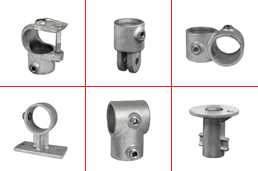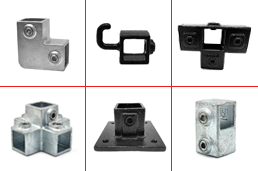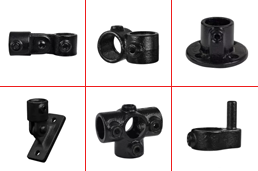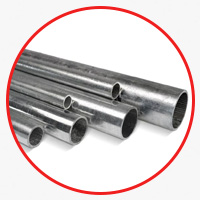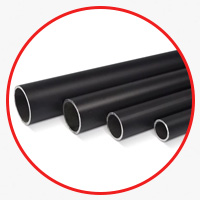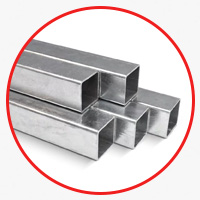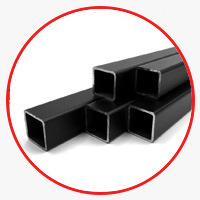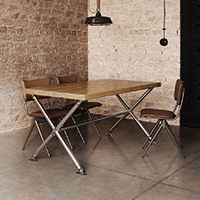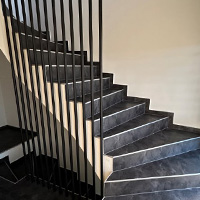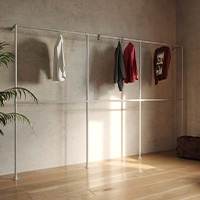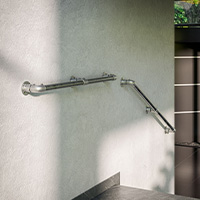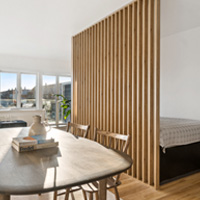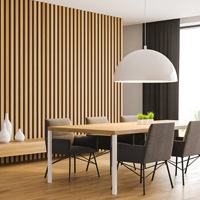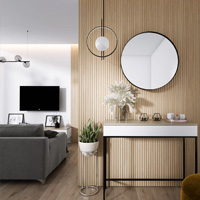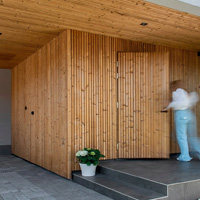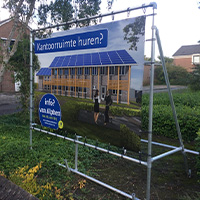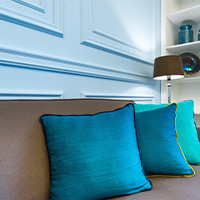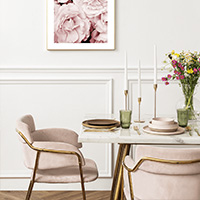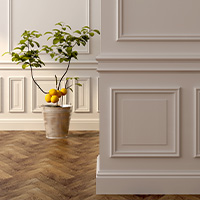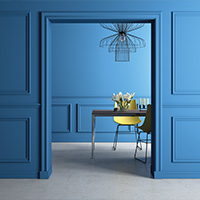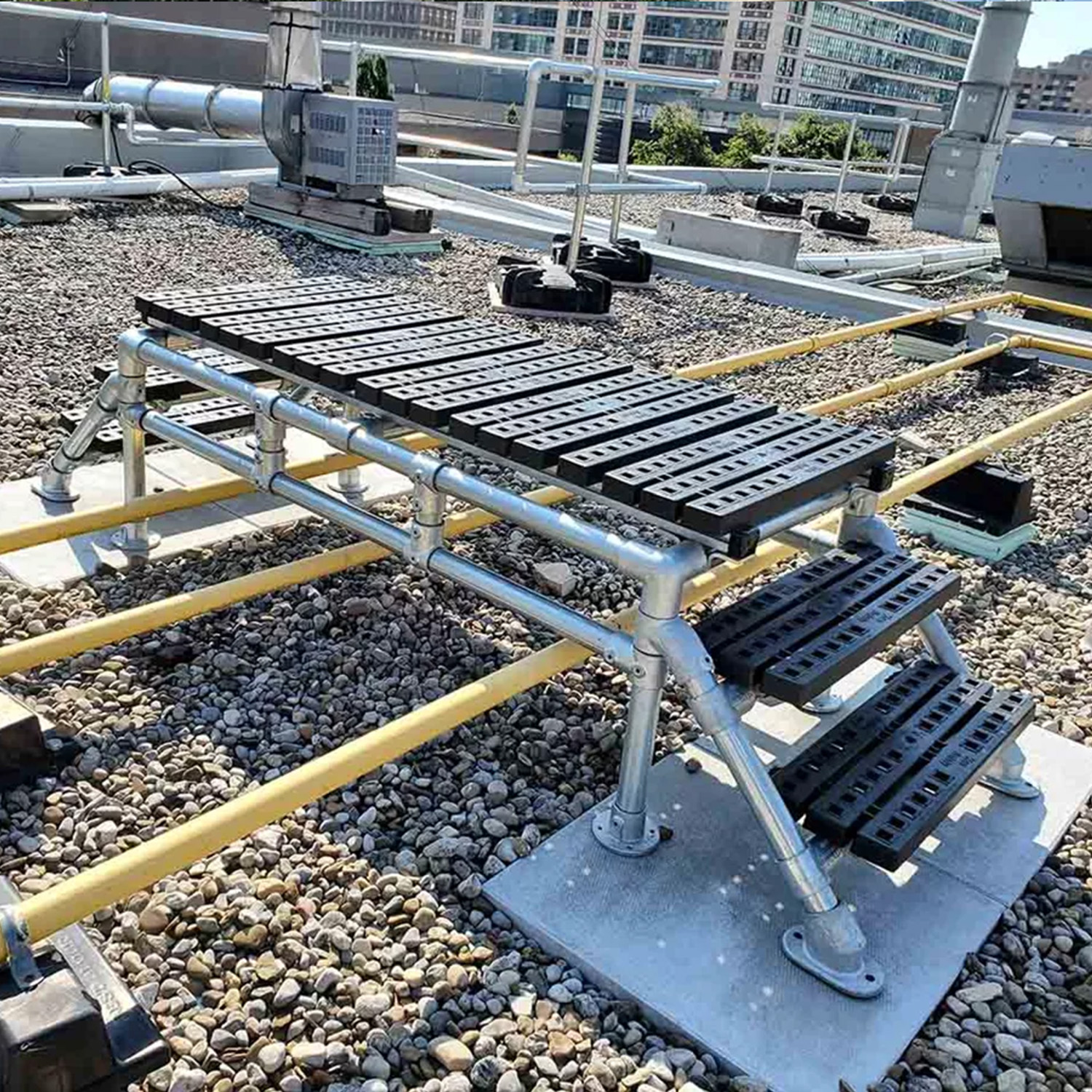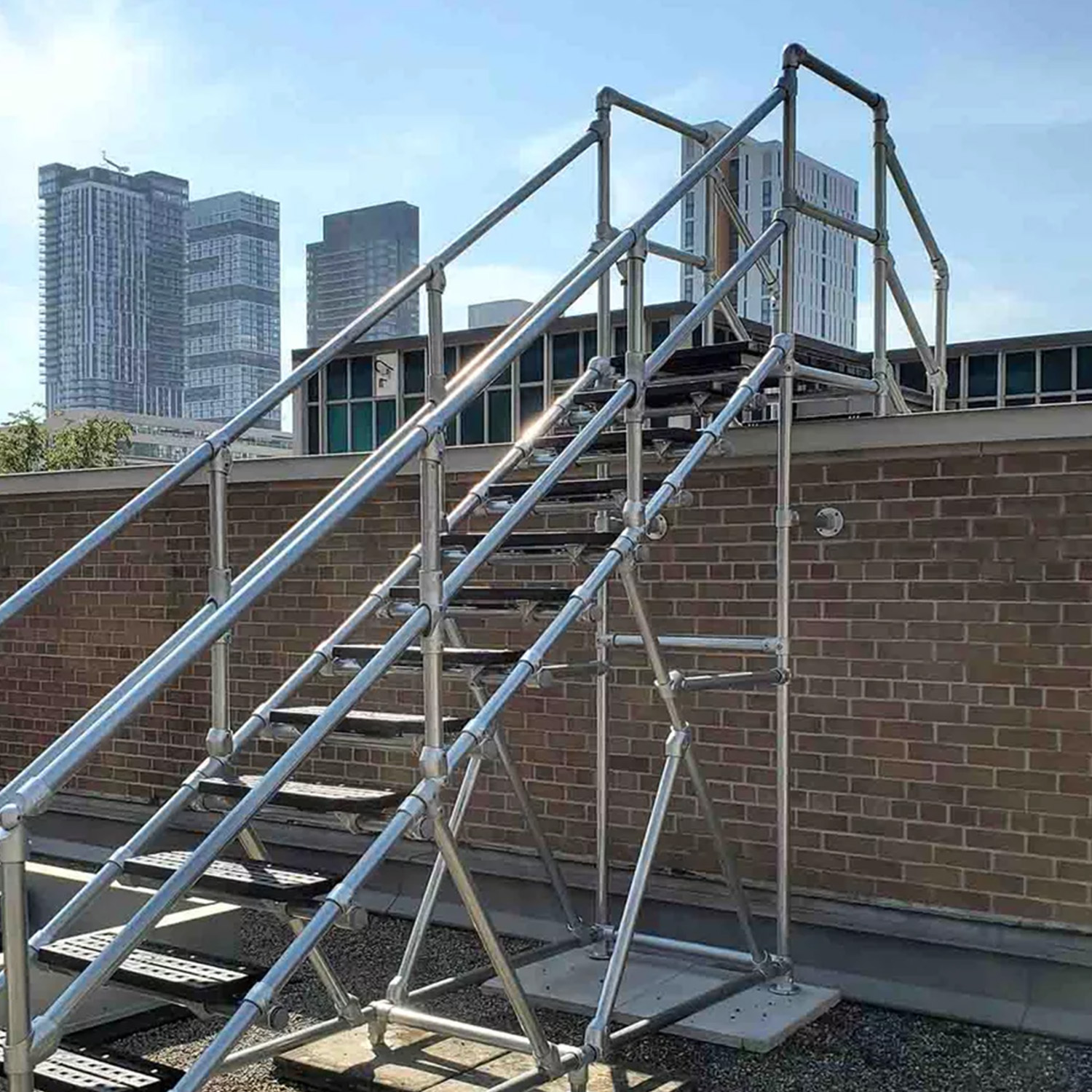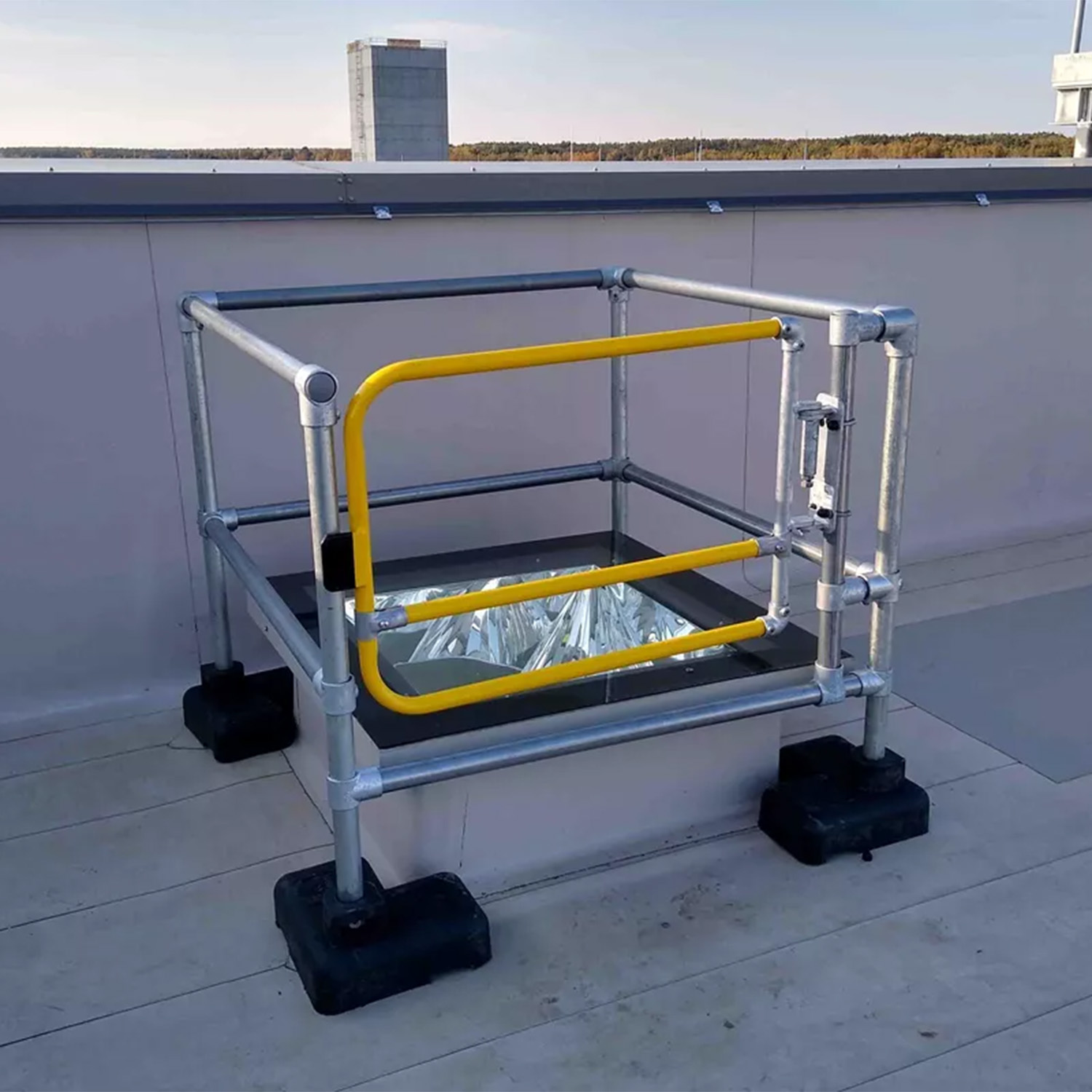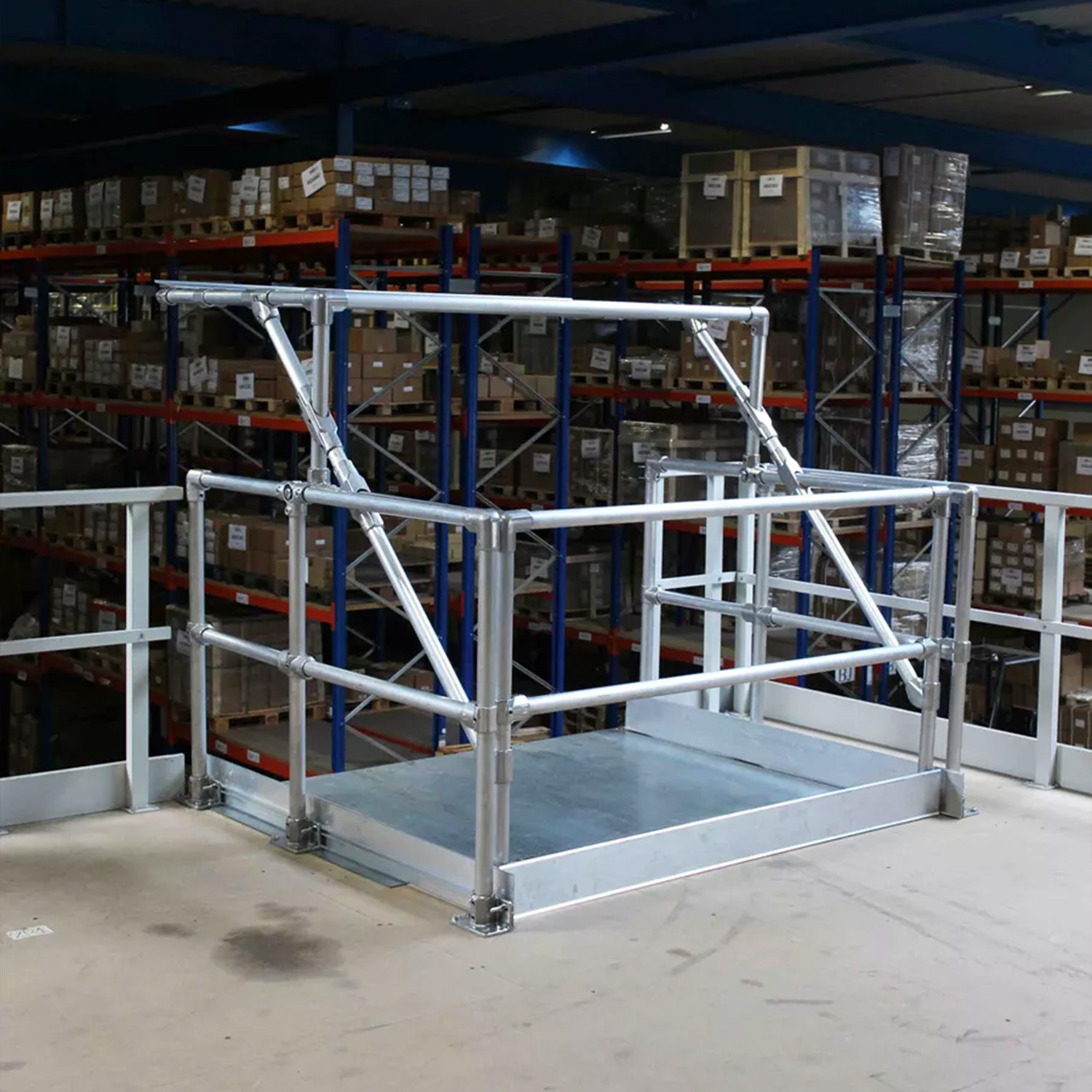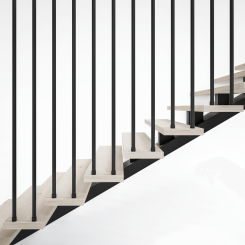Vertial Handrails
WHY DO WE EQUIP STAIRS WITH BALUSTRADES?
Stairs are one of the basic elements used in multi-level construction. Balustrades for their protection are usually installed at the outer edges of the treads. The purpose of the balustrade is to cordon off the stair space, which is crucial for safe use of the stairs, especially if there are young children or elderly people in the house. The obligation to install balustrades is regulated by the provisions of the Construction Law. They must be installed at the stairs when their height exceeds 50 centimeters and should meet the specific guidelines set forth in the relevant standards.
Balustrades are also important decorative elements of interior design. They can be made of various metal alloys, plastic and concrete. They allow designers and architects considerable freedom in the formation of shapes, types of materials used and design.
STAIRS AND BALUSTRADES DETERMINE THE CHARACTER OF THE INTERIOR
Stairs are an element of the architecture of the home space that plays a prominent role. In recent years, they have acquired a special dimension - performing their utilitarian function, they have also become an element of the interior composition and its striking decoration.
The various shapes of steps and balustrades, as well as the materials from which they are made, allow to create in the interiors of houses extremely original forms. Nowadays stairs are located in the open space, they are part of the living room, hall or penetrate between them. Their shape significantly affects the composition and aesthetics of the interior.
The character of the staircase is largely determined by the form of the balustrade. Adapted stylistically to the appearance of the interior strongly affects it. They take different shapes in houses maintained in the style of an old mansion, others in modern high-tech interiors. In rooms referring to turn-of-the-century aesthetics, balustrades are enriched with Art Nouveau decorative elements in the form of swirling organic forms. Sometimes scattered in disarray at various angles, the rods supporting the railing are an interesting decorative element. In contemporary interiors, the balustrade will take a minimalist form. In recent years, harp balustrades are very popular among interior designers.
HARP BALUSTRADES - MODERN AND SAFE.
Harp balustrades, that is, balustrades made entirely of steel tubes, are increasingly popular as finishing or decorative elements of stairs. A harp made of steel tubes is nothing more than vertically fixed elements that connect the ceiling to the stair treads. The tubes set at the right distance between them create an effect called a harp. The harp balustrade gives the impression of lightness, while maintaining a minimalist style and providing a high degree of safety in daily use.
HARP BALUSTRADE WITH EXCELLENT PROTECTIVE COATING
Harp balustrades are composed of powder-coated steel tubes. What does this anti-corrosion technique consist of?
Powder coating involves the application of electrified particles (20-100 μm) of powder paint on an electrically conductive surface. The deposited powder layer is maintained by electrostatic forces. The paint-coated harp balustrade components are then heated to 140-200°C, resulting in melting and polymerization of the powder. The resulting paint coating is resistant to corrosion, chemicals, heat and mechanical damage.
The main advantages of powder coating:
- no emission of solvents and thinners into the environment,
- almost 100 percent utilization of the painting material,
- significant energy savings due to the possibility of using closed ventilation systems,
- the resulting coatings, thanks to their thickness (60-80 μm), perfectly mask the inaccuracies of mechanical processing,
- perfect anti-corrosion protection of coated materials.
HARP BALUSTRADES SIMPLE CONSTRUCTION AND EASY INSTALLATION
Harp balustrades are composed of individual steel pipes of appropriate length, painted black with powder coating technique. Installation consists of screwing on the ceiling and stair treads brackets and placing the pipe with couplers on them. Each coupler just needs to be immobilized with allen screws.

